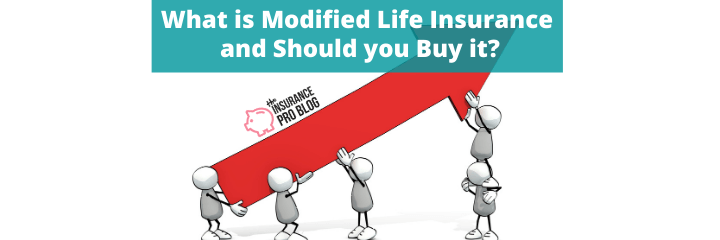Modified life insurance, also commonly modified whole life insurance, is a unique form of permanent life insurance that offers a much lower premium for the first few policy years in exchange for a higher premium after an introductory period. The spirit of this type of life insurance is budget-friendliness. The target market is families where breadwinners may be in the early stages of their career, but anticipate a significant pay raise in the near future. This product may also work out well for someone who has other financial obligations that they plan to retire within a few years.
What to Expect when Buying a Modified Life Policy
The chief thing to understand about modified life insurance is that the premium will increase after a few years from purchase. This increase will likely be pretty significant. The good news, however, is that usually modified life policies only undergo one premium increase. This means the policy owner doesn't have to make continuously increasing premium payments for the entire time he/she owns the policy.
An example of a modified life policy might look something like this:
Let's say that you are looking to buy $1 million of life insurance. You like the idea of a cash value-style policy, but the premiums quoted $1 million of whole life or universal life insurance are outside of your budget. You feel strongly that within a few years you'll be able to afford such a policy, but not right now.
Your agent recommends a modified whole life policy. Under this arrangement, you'll have a $1 million death benefit, but you'll pay a substantially lower premium versus the quotes you received for regular whole life insurance. But after five years, the premium will increase to an amount higher than the original whole life quote you looked at. Numerically this might look something like this:
Pay a premium of $650 per year for five years and then pay a premium of $9,000 per year for the rest of your life.
Commonly, modified life policies do not accumulate cash value while they are in the lower or “modified” premium stage. So if you cancel the policy during this time, you will not receive any cash value for the premiums you paid. But once the policy premium increases, the policy will start to accumulate cash value. It will also commonly earn dividends assuming it's a participating modified whole life policy. Once the policy premium increases, the policy will behave like a regular whole life policy.
What's the Difference Between Whole Life Insurance and Modified Whole Life Insurance?
The key difference between regular whole life and modified whole life is the premium increase that takes place a few years after you buy the policy. Regular whole life insurance will guarantee the same level premium in all years. Modified whole life insurance will require you to pay a higher premium at some point in the future after paying a lower premium for the first few years.
Everything else is pretty much fundamentally identical about the two types of life insurance. They both pay a death benefit, they both enjoy the same tax benefits life insurance contracts offer.
Modified whole life and regular whole life will generally differ when it comes to more advanced design aspects. Many of the features used to build more rapid cash value in a whole life policy are generally not available on a modified whole life policy.
The Product is Going Extinct
The invention of convertible term life insurance is pushing modified life insurance into extinction. Term life insurance that you can convert to whole life insurance accomplishes the same goal as modified policies. In addition, term life policies with a conversion feature give the policyholder more time to make the switch to whole life insurance and pay a higher premium. This is the case because modified policies have a very rigid scheduled premium increase that the policyholder cannot delay. Using our example above, the increase from $650 to $9,000 happens after five premium payments whether or not the policy owner is ready to pay that premium. If the policyholder of a modified policy cannot pay the increased premium, he/she must cancel the policy.
This is not generally the case for a term policy someone intends to convert to whole life insurance. Some term policies do have a specific window of time within which the policy owner must convert, but if you miss this window, you can still keep your term life policy in-force and pay the term premium.
Bottom Line
Modified life insurance is a quirky product–by today's standards–that will provide you a path to permanent life insurance ownership when your finances don't presently support such a purchase. You won't find it available at most major life insurers, but there are smaller more niche insurers still offering the product.
Convertible term life insurance displaced modified life insurance years ago and it accomplishes a similar goal. This is the option you'll find at major life insurance companies, but be aware that you'll need to buy a term policy from the company that issues the cash value product you want to ultimately buy, the conversion window does vary from company to company, and there is no guarantee that the permanent product you want will be available in a few years when you are ready to convert your term policy.
Lastly, buying modified life insurance for permanent life insurance requires you to mostly focus on the death benefit with cash value accumulation playing a distant secondary goal. Modified life policies do not offer the features used to optimize the cash value accumulation of a permanent life policy.

